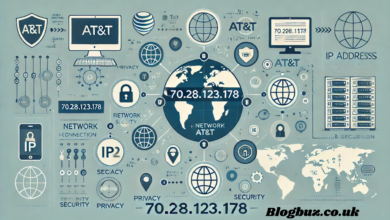The Power of Dynamic Content in Digital Marketing

In today’s digital landscape, brands compete for user attention across multiple platforms. As consumer behavior evolves, traditional marketing tactics no longer suffice. Audiences expect relevant, personalized experiences, making dynamic content a critical component of modern marketing strategies. By tailoring digital experiences based on real-time data, businesses can significantly enhance engagement, boost conversions, and build stronger customer relationships.
Understanding Dynamic Content
Dynamic content refers to digital elements that change based on user preferences, behaviors, or interactions. Unlike static content, which remains the same for all users, dynamic elements adapt to deliver a more personalized experience. This can include personalized email campaigns, customized landing pages, or tailored product recommendations. Website personalization, for example, enables brands to adjust web pages based on a visitor’s browsing history, location, or past interactions, ensuring a more engaging experience.
A practical example of dynamic content is a retail website displaying different product recommendations for each visitor. If one user frequently browses sports gear while another searches for home decor, the website will adjust its suggestions accordingly. This tailored experience increases the chances of conversions while improving customer satisfaction.
The Role of Data in Dynamic Content
The success of dynamic content relies on data collection and analysis. By gathering insights from user interactions, brands can create highly relevant content that meets individual needs. Data sources may include browsing history, purchase patterns, geographic location, and social media activity. Advanced algorithms process this information in real time, allowing businesses to deliver customized experiences that align with a user’s interests and behaviors.
Data segmentation plays a crucial role in ensuring that dynamic content reaches the right audience. By categorizing users based on shared characteristics—such as age, location, or previous purchasing behavior—businesses can craft highly specific marketing messages. This method ensures that audiences receive content that resonates with their unique needs rather than generic advertisements.
Enhancing User Engagement
One of the primary advantages of dynamic content is its ability to capture user attention. Personalized experiences make users feel valued, increasing the likelihood of engagement. When website visitors encounter content that aligns with their preferences, they are more likely to stay longer, interact with multiple pages, and complete desired actions. Email campaigns that incorporate personalized recommendations also see higher open and click-through rates compared to generic messages.
Consider a streaming platform that recommends movies and shows based on viewing history. By analyzing a user’s past interactions, the platform ensures that suggested content aligns with their tastes, making the experience more engaging. This concept applies to digital marketing, where personalized experiences keep users interested and encourage them to interact with a brand’s offerings.
Improving Conversion Rates
Dynamic content plays a crucial role in driving conversions. Personalized product recommendations, targeted advertisements, and customized calls-to-action encourage users to take specific steps, such as making a purchase or signing up for a service. When a potential customer sees content relevant to their needs, they are more likely to proceed with a transaction. This approach reduces friction in the buyer’s journey and enhances the overall customer experience.
For instance, an e-commerce store can display limited-time discounts based on a visitor’s browsing history. If a user frequently views a particular item but has not made a purchase, the website can generate a customized offer to incentivize the transaction. This level of personalization not only boosts sales but also creates a sense of exclusivity that enhances customer satisfaction.
Strengthening Customer Retention
Retaining customers is just as important as acquiring new ones. Dynamic content helps brands maintain long-term relationships by continuously delivering relevant experiences. Personalized email campaigns, tailored promotions, and exclusive offers based on user preferences keep customers engaged. When consumers feel understood and valued, they are more likely to remain loyal to a brand.
Loyalty programs, for example, can leverage dynamic content to offer rewards tailored to a customer’s previous purchases. A travel booking site might send a special discount on hotels in a user’s most frequently visited destinations. By making interactions more relevant, brands increase the likelihood of repeat business and long-term engagement.
Applications of Dynamic Content in Digital Marketing
Dynamic content can be implemented across various digital marketing channels, enhancing customer experiences and driving business growth:
Websites
Personalized landing pages adjust based on user preferences, ensuring visitors see relevant offers, product suggestions, and content. This increases engagement and conversion rates by making the browsing experience more meaningful. A travel website, for example, may display vacation packages based on a user’s past searches and booking history.
Email Marketing
Automated email campaigns deliver unique content based on customer behavior, increasing engagement and conversions. Instead of sending generic newsletters, brands can use dynamic elements to personalize subject lines, product recommendations, and promotional offers. An online bookstore might send tailored reading suggestions based on a user’s past purchases.
Social Media
Dynamic ads adjust messaging and visuals according to audience demographics, browsing behavior, or engagement history. Social media platforms use real-time data to show users relevant ads, increasing click-through rates. For instance, a fitness brand may display different advertisements to users interested in yoga versus those who prefer weightlifting.
E-commerce
Online stores use past purchases and browsing history to recommend products, improving the shopping experience. Product pages, checkout screens, and remarketing emails can all feature personalized suggestions that align with each customer’s preferences. This approach helps businesses maximize sales opportunities while offering a seamless shopping journey.
Challenges and Considerations
Despite its benefits, implementing dynamic content requires careful planning. Data privacy regulations must be followed to ensure ethical data collection and usage. Consumers are increasingly aware of how their personal information is used, making transparency a key factor in building trust.
Additionally, real-time content adaptation requires robust technology and data-processing capabilities. Businesses must invest in the right tools and infrastructure to support dynamic content strategies effectively. Without proper implementation, personalization efforts may result in irrelevant recommendations, diminishing the user experience.
Another challenge is finding the right balance between automation and human oversight. While AI-driven personalization is highly effective, over-reliance on automation can lead to impersonal interactions. A thoughtful approach that blends technology with human insight ensures that personalization efforts remain authentic and valuable.
The Future of Dynamic Content
As artificial intelligence and machine learning continue to advance, dynamic content will become even more sophisticated. Predictive analytics will enable brands to anticipate user needs, delivering highly relevant experiences before users even express them. Voice search and augmented reality may further enhance personalization, transforming the way consumers interact with digital content.
For example, AI-driven chatbots may provide real-time product recommendations based on customer queries, creating a more interactive shopping experience. Augmented reality applications could allow users to see how a product fits into their lifestyle before making a purchase. These innovations will continue to push the boundaries of digital marketing, making personalization more intuitive and impactful.
Conclusion
Dynamic content is no longer a luxury but a necessity in digital marketing. Businesses that integrate website personalization and adaptive strategies into their campaigns can create stronger connections with consumers, leading to increased engagement, higher conversion rates, and long-term customer loyalty. By leveraging data-driven insights and continuously refining personalization techniques, brands can stay ahead in an increasingly competitive digital world.




